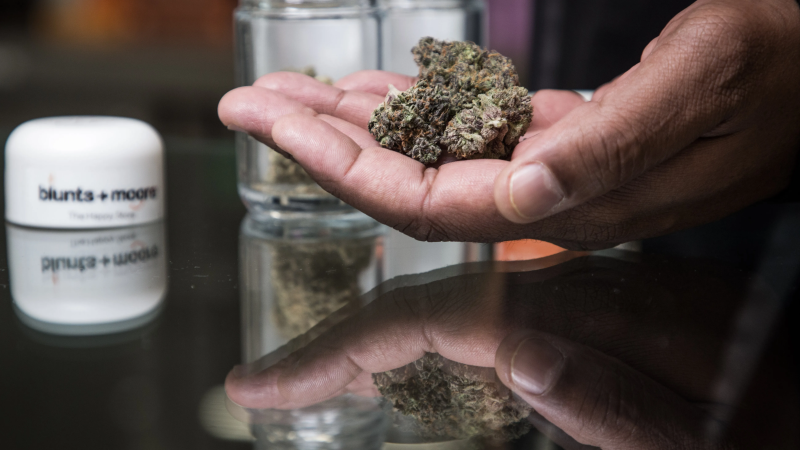Study says more Americans smoke marijuana daily than drink alcohol
More Americans are now reporting daily or near-daily use of marijuana than those who drink alcohol at similar levels, marking the first time in about three decades that the everyday use of marijuana has surpassed that of alcohol, according to a new analysis released Wednesday.
The research, which was published in the journal Addiction and authored by Carnegie Mellon University drug policy researcher Jonathan Caulkins, analyzed data from the National Survey on Drug Use and Health which had over 1.6 million participants across nearly 30 surveys from 1979 to 2022. Although alcohol consumption is still more widespread, the analysis found that 2022 was the first time people reported using more cannabis daily or near daily than alcohol.
In 2022, about 17.7 million people reported using marijuana daily or near daily compared to the 14.7 million who reported drinking daily or near daily, according to the analysis. In 1992 — when marijuana use reached its lowest point — less than 1 million people said they used the drug every day while 8.9 million reported drinking alcohol daily.
"Through the mid-1990s, only about one-in-six or one-in-eight of those users consumed the drug daily or near daily, similar to alcohol’s roughly one-in-ten," Caulkins and Stanford University professor Keith Humphries wrote in the Washington Monthly about the analysis. "Now, more than 40 percent of marijuana users consume daily or near daily."
The upward trend coincides with changes in cannabis policy. Trends in cannabis have declined during "periods of greater restriction" and increased during "periods of policy liberalization," according to the analysis.
Marijuana reclassification:President Biden hails 'major step' toward easing federal rules on marijuana
Marijuana 'no longer a young person's drug'
The analysis noted that while "far more" people drink alcohol than use marijuana, high-frequency drinking is less common.
In 2022, the median drinker reported drinking alcohol on four to five days in the past month compared to the 15 to 16 days in the past month for marijuana users, according to the analysis. And from 1992 to 2022, there was a 15-fold increase in the per capita rate of reporting daily or near daily use of marijuana, the analysis found.
The analysis added that patterns of cannabis consumption have also shifted toward cigarette use patterns. But marijuana use is still not as high as cigarette use, according to the analysis, which cited a 2022 National Survey on Drug Use and Health survey that said about 58% — over 24 million people — of past month cigarette smokers smoked daily.
The analysis also found that marijuana is "no longer a young person's drug." In 2022, people 35 and older accounted for "slightly" more days of use than those under 35, according to the analysis.
"As a group, 35-49-year-olds consume more than 26-34-year-olds, who account for a larger share of the market than 18-25-year-olds," Caulkins and Humphries wrote in the Washington Monthly. "The 50-and-over demographic accounts for slightly more days of use than those 25 and younger."

Federal government takes step toward changing rules on marijuana
Earlier this month, the U.S. Department of Justice announced a historic proposal to ease restrictions on marijuana by reclassifying marijuana from a Schedule I drug to a Schedule III drug.
Schedule I drugs — such as heroin — are considered to be highly dangerous, addictive and are not accepted for medical use. Schedule III drugs are considered to have a moderate to low potential for physical and psychological dependence, and includes drugs like Tylenol with codeine and anabolic steroids.
While rescheduling marijuana does not make it legal at the federal level, the change represents a major step in narrowing the gap between federal and state cannabis laws.
As of April, recreational and medical marijuana is legal in 24 states and the District of Columbia, according to the Pew Research Center. And another 14 states have legalized cannabis for medical use only.
Reclassifying marijuana will also allow more research and medical use of the drug as well as to leading to potentially lighter criminal penalties and increased investments in the cannabis sector.
Contributing: Joey Garrison, USA TODAY; Reuters
Disclaimer: The copyright of this article belongs to the original author. Reposting this article is solely for the purpose of information dissemination and does not constitute any investment advice. If there is any infringement, please contact us immediately. We will make corrections or deletions as necessary. Thank you.





